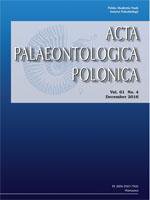Spinosaurs represent a group of peculiar theropod dinosaurs that have often been described as “crocodile-mimic”, predominantly fish-eating predators, and recently claimed to have been semi-aquatic animals. Here we report a suite of craniodental characters unexpectedly shared by spinosaurs and pike conger eels. Pike conger eels are predatory, mainly piscivorous bottom-dwelling anguilliform fishes that inhabit marine and brackish environments. These two groups of dinosaurs and fishes show a mediolaterally compressed, elongated rostrum, a terminal “rosette” bearing enlarged teeth in both upper and lower jaws, and a notch posterior to the premaxillary “rosette” characterized by the presence of reduced teeth. The morphological convergence observed in the jaws of these two distantly related groups of vertebrates may result from similar feeding behaviours. This typical jaw morphology likely represents an effective biomechanical adaptation for biting and grabbing elusive prey items in low-light aquatic environments. Associated with this specialized snout morphology, numerous integumentary mechanoreceptors involved in prey detection are present in both spinosaurs and pike congers. Our new observations provide an additional convincing argument regarding the decades-long and widely debated lifestyle of spinosaurs.
How to translate text using browser tools
2 September 2016
Convergent Evolution of Jaws between Spinosaurid Dinosaurs and Pike Conger Eels
Romain Vullo,
Ronan Allain,
Lionel Cavin






